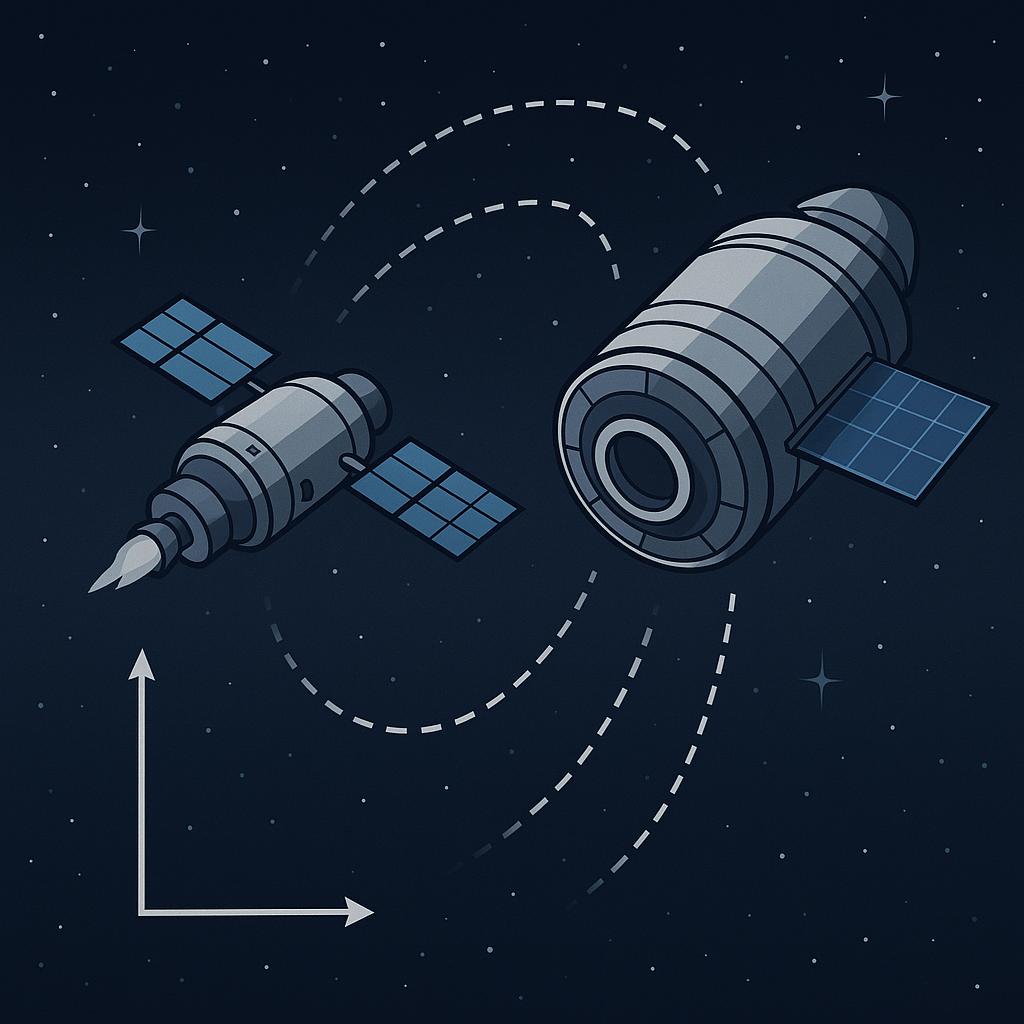· Shane Trimbur
Delta-Shell Dirac Operators: The Quantum Design Breakthrough for Next-Gen Hardware
The latest research on Dirac operators with delta-shell potentials delivers a sharp, actionable design rule for quantum hardware, enabling reliable, high-performance devices for quantum AI and advanced electronics.

Delta-Shell Dirac Operators: The Quantum Design Breakthrough for Next-Gen Hardware
A new mathematical breakthrough in quantum physics is set to transform how we design quantum hardware. Researchers have derived an explicit, sharp condition for Dirac operators with delta-shell potentials—an advance that provides engineers with a precise recipe for building reliable, high-performance quantum devices.
Mission Impact:
This isn’t just theoretical physics. The new design rule gives hardware engineers a clear, testable boundary for when quantum devices will operate reliably, dramatically accelerating the development of quantum AI, advanced sensors, and next-generation electronics.
The Bottom Line Up Front
The core result:
sup d(x) < π²/4, where d(x) is the difference between electrostatic and Lorentz scalar interaction strengths.
- Explicit and Sharp: This is the tightest possible bound—no guesswork, no overdesign.
- Universal: The framework covers virtually all practical device scenarios, and if the threshold is exceeded, it even provides a systematic way to restore stability by adding magnetic interactions.
- Bridges Theory and Engineering: For the first time, abstract quantum models translate directly into actionable hardware design criteria.
Why This Design Rule Matters
1. Reliable Quantum Behavior
- Quantum hardware—like quantum dots, wells, or surface-based qubits—depends on controlling electron behavior at atomic scales.
- The explicit condition ensures predictable, stable quantum effects. As long as the interaction difference stays below π²/4, the mathematical model accurately predicts device behavior.
2. Maximum Performance, Minimum Risk
- Because the condition is sharp, engineers can push device performance right up to the threshold—maximizing speed, density, and energy efficiency without risking unpredictable quantum breakdowns.
- This enables denser, faster, and more energy-efficient quantum hardware.
3. Universal Applicability
- The framework doesn’t just apply to ideal cases. If the condition is violated, the researchers show how to add magnetic interactions to restore device stability.
- This systematic path means no more trial-and-error in quantum device design.
4. Accelerating Quantum AI and Edge Devices
- Quantum LLMs and AI hardware require robust, scalable, and coherent quantum memory and logic elements.
- The explicit condition ensures the hardware can realize exotic quantum effects—like entanglement and error correction—without unexpected failures.
Technical Architecture: How the Condition Is Used
Step 1: Device Modeling
- Engineers model the quantum device using Dirac operators with delta-shell potentials.
- They calculate the local difference d(x) between electrostatic and Lorentz scalar interactions.
Step 2: Design Validation
- The device is validated if sup d(x) < π²/4.
- If not, magnetic interactions are introduced as prescribed by the new framework.
Step 3: Fabrication and Testing
- Devices are fabricated to meet the explicit criterion, ensuring reliable quantum behavior.
- Testing confirms stability and performance up to the theoretical limit.
Operational Applications
Quantum Computing
- Graphene quantum dots and surface-based qubits: Stable, high-fidelity quantum logic operations.
- Spintronic memory: Ultra-low power, instant-on computing.
Advanced Sensing
- Surface plasmon resonance sensors: Single-molecule detection for medical diagnostics and environmental monitoring.
- Quantum well devices: High-speed electronics for communications, imaging, and autonomous systems.
Secure Communications
- Quantum key distribution hardware: Reliable, tamper-proof quantum channels for cybersecurity.
Performance Metrics
| Specification | Impact on Quantum Hardware |
|---|---|
| Predictable Quantum Effects | Stable, reliable device operation |
| Maximum Efficiency | Optimal performance at sharp threshold |
| Universal Framework | Covers all device scenarios |
| Engineering Clarity | Direct, actionable design rule |
| Quantum AI Enablement | Supports robust, scalable quantum LLMs |
Acquisition & Implementation Pathway
Technology Readiness
- Mathematical Framework: Now explicit and actionable—ready for integration into quantum device design.
- Hardware Integration: Applies to a wide range of quantum hardware platforms.
- Standards Alignment: Provides a universal design rule for next-gen quantum systems.
Risk Mitigation
- No Overdesign: Sharpness of the condition prevents unnecessary cost and complexity.
- Systematic Extensions: Magnetic interactions can restore stability if the threshold is exceeded.
Strategic Advantage
This explicit design rule is the linchpin for moving quantum hardware from theoretical possibility to practical, scalable, and high-performance reality. It empowers engineers to build the next generation of quantum AI, secure communications, and advanced sensors with confidence.
Bottom Line:
The quantum future is here—made possible by a single, sharp mathematical condition that bridges the gap between abstract physics and real-world technology.
Reference: Behrndt, J., Holzmann, M., & Stelzer-Landauer, C. (2025). Approximation of Dirac operators with δ-shell potentials in the norm resolvent sense, II. Quantitative results.



